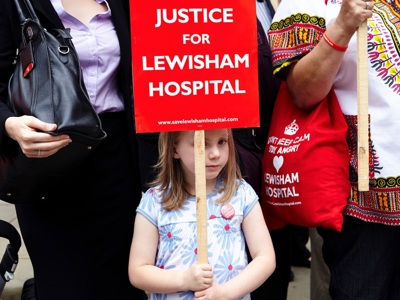
How abuse redress schemes can empower survivors
Andrew Lord, partner at Leigh Day who represents survivors of abuse, explores how redress schemes can be an effective, efficient and empowering way to compensate survivors, provided implementation is thoroughly considered and they are adequately resourced.
Posted on 29 September 2025
In October 2022, over eight years after it was first announced by the then-Home Secretary, the Independent Inquiry into Child Sexual Abuse (“IICSA”) released its final report. After several thorough and lengthy individual investigations, the comprehensive final report contained 20 recommendations.
One suggestion was that a non-adversarial national redress scheme for survivors of child sexual abuse and exploitation should be established, funded by central and local government with voluntary contributions by non-state institutions. Such a scheme would have followed precedents from other jurisdictions, including Scotland, Ireland and Northern Ireland, in providing a less litigious route to compensation for survivors.
IICSA’s recommendations seemed to languish on the sidelines for a few years, that is until April 2025, when there was renewed hope following a ministerial statement which gave an update on progress towards implementing many of the proposals. However, one notable absence was the national redress scheme, as the Government confirmed it was not currently taking steps to advance this.
The arguments in favour of redress schemes for survivors are varied but largely straightforward. Compensation accounts for the harm caused and allows access to therapy, they provide a sense of justice served through a less adversarial process, the risks of retraumatisation are minimised, and there are ultimately less legal costs when considered against comparable civil claims.
There have been examples of successful redress schemes for abuse survivors within England and Wales, such as the Lambeth Redress Scheme, which saw over 2,200 survivors apply for compensation and also offered non-financial remedies such as a written apology. The Scheme closed in January 2022, and as of March 2024 approximately £101 million had been paid in compensation and £16.4 million for applicants’ legal costs.
My own experience representing applicants in the Lambeth scheme was that many survivors came away feeling positive. However, given the inherent sensitivities involved, the scope for disagreement on where applications fell within particular bandings, and the expertise required to present best evidence for complex impact and losses in non-recent claims, this collectively meant that the input of specialist legal advisors was beneficial to the majority of applicants I met with.
The Church of England is the latest institution to take the initiative and has announced its own redress scheme for survivors of abuse of all ages. This seeks to compensate those subjected to sexual, physical, emotional, spiritual or financial abuse, or neglect by a person who was authorised to perform a role in the Church of England, and where there is a close connection between that person’s role and the abuse they inflicted. There is also an additional eligibility pathway where an appropriate person in the church failed to take steps to prevent abuse once they were aware of a risk.
While it is difficult at this stage to know how this shall all work in practice, the Abuse Redress Rules put before the July 2025 meeting of the General Synod seem to suggest that once a survivor can satisfy the eligibility criteria, their compensation will be based on the severity of the abuse, with a sliding scale uplift applied if there are aggravating features. An additional amount would then be added based on the level of impact, but this too can seemingly be increased if justified by exceptional circumstances. Finally, credit is to be given for any previous payments received for the incidents, with some limited exceptions. Interestingly, the papers also suggest that Claimants who have previously been awarded compensation would be able to apply for redress.
The Church of England redress scheme may prove difficult for some to navigate. Perhaps necessarily, the scheme does not have a straightforward flow, and there appears to be room for subjectivity - who decides the severity of impact, what are the exceptional circumstances which would give rise to an increase in payment, and will a survivor’s account be given primacy? The scheme as a whole comes across as quite legalistic, and seems to require applicants to gather evidence, including expert evidence. The papers before the July 2025 General Synod also set out how once a redress award is made an applicant waives any other right to recover compensation for the abuse.
It seems clear to me that applicants will need to understand their options clearly and be ready to advance their best case from the very outset should they opt to apply for redress. In the circumstances, it is appropriate and fair that survivors can engage specialist legal representatives who understand the risks of retraumatisation and how best to present evidence in sensitive and complex non-recent claims. It is therefore perhaps surprising to see the paucity of applicant’s legal fees permitted under the Church of England scheme. This appears not to recognise the benefit to all parties in having an experienced specialist representing applicants, to ensure a smoother process that empowers survivors.
The lack of a national redress scheme is disappointing to say the least. Many survivors gave so much of themselves to the IICSA, only to see incredibly slow progress on some of the eventual recommendations, and the total abandonment of redress by central Government. Survivors remain in much the same position, fighting adversarial claims for compensation unless institutions take up the mantle and establish alternative, non-adversarial provision. Such schemes can be considered favourably by many survivors, but there must be adequate provision for support by specialist representatives to help ensure a smooth process.




